
-
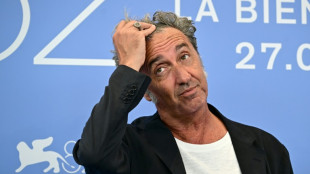 Italy's Sorrentino embraces doubt in euthanasia film at Venice
Italy's Sorrentino embraces doubt in euthanasia film at Venice
-
Trump urges criminal charges against George Soros, son

-
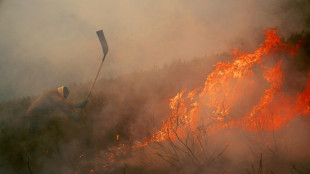 Wildfires pile pressure on Spanish PM
Wildfires pile pressure on Spanish PM
-
Stock markets mixed ahead of Nvidia earnings

-
 Football's loss as hurdles sensation Tinch eyes Tokyo worlds
Football's loss as hurdles sensation Tinch eyes Tokyo worlds
-
Pakistan blows up dam embankment as it braces for flood surge
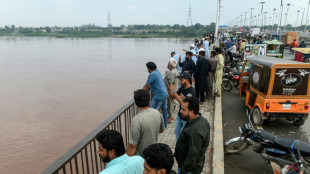
-
 Lego posts record sales, sees market share growing further: CEO
Lego posts record sales, sees market share growing further: CEO
-
France overlook Ekitike for World Cup qualifiers, Akliouche called up

-
 Rain no obstacle, Lyles insists ahead of Diamond League finals
Rain no obstacle, Lyles insists ahead of Diamond League finals
-
Almodovar urges Spain cut ties with Israel over Gaza
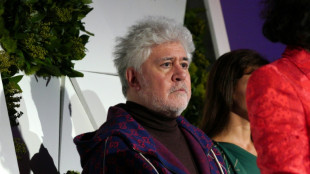
-
 Macron gives 'full support' to embattled PM as crisis looms in France
Macron gives 'full support' to embattled PM as crisis looms in France
-
Stock markets diverge awaiting Nvidia earnings

-
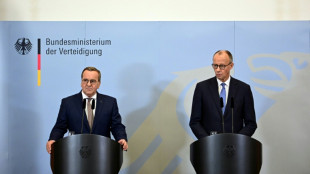 German cabinet agrees steps to boost army recruitment
German cabinet agrees steps to boost army recruitment
-
Denmark summons US diplomat over Greenland 'interference'
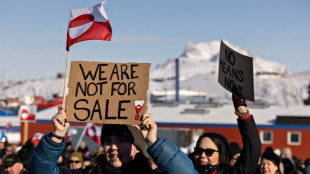
-
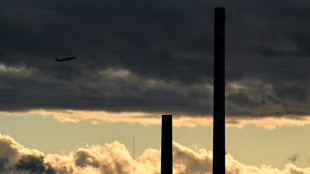 German factory outfitters warn of 'crisis' from US tariffs
German factory outfitters warn of 'crisis' from US tariffs
-
Israel ups pressure on Gaza City as Trump eyes post-war plan
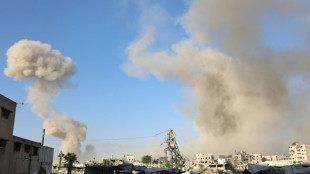
-
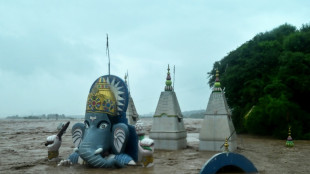 Floods, landslides kill at least 30 in India's Jammu region
Floods, landslides kill at least 30 in India's Jammu region
-
Former player comes out as bisexual in Australian Rules first

-
 Indian spin great Ashwin calls time on IPL career
Indian spin great Ashwin calls time on IPL career
-
India faces world football ban for second time in three years

-
 Globetrotter Herzog to get special Venice award
Globetrotter Herzog to get special Venice award
-
'Old things work': Argentines giving new life to e-waste

-
 Showtime for Venice Film Festival, with monsters, aliens, Clooney and Roberts
Showtime for Venice Film Festival, with monsters, aliens, Clooney and Roberts
-
Thai woman jailed for 43 years for lese-majeste freed
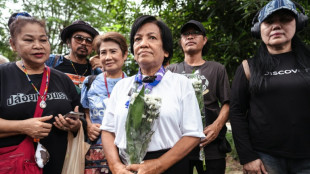
-
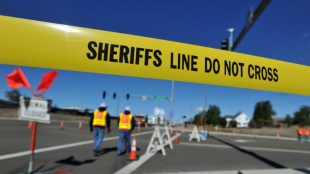 What is swatting? Shooting hoaxes target campuses across US
What is swatting? Shooting hoaxes target campuses across US
-
Row over Bosnia's Jewish treasure raising funds for Gaza
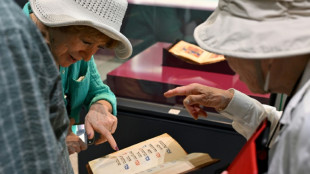
-
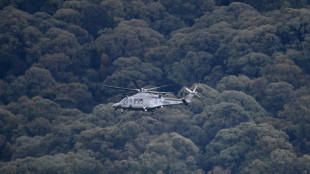 Police search Australian bush for gunman after two officers killed
Police search Australian bush for gunman after two officers killed
-
NZ rugby player who suffered multiple concussions dies aged 39

-
 Former Australian Rules player comes out as bisexual in first
Former Australian Rules player comes out as bisexual in first
-
French, German, Polish leaders to visit Moldova in show of force in face of Russia

-
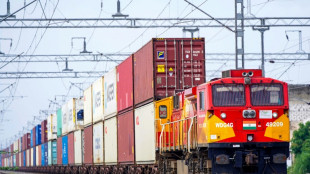 US tariffs on Indian goods double to 50% over Russian oil purchases
US tariffs on Indian goods double to 50% over Russian oil purchases
-
Feudal warlord statue beheaded in Japan
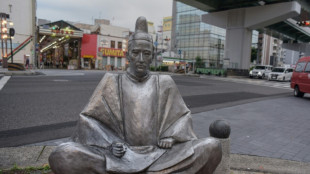
-
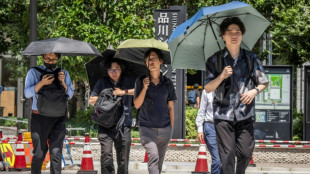 Tokyo logs record 10 days of 35C or more
Tokyo logs record 10 days of 35C or more
-
Sinner, Swiatek romp through at US Open as Gauff struggles
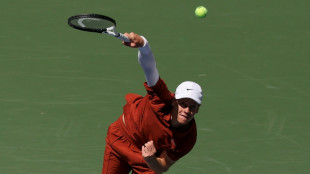
-
 Brazil to face South Korea, Japan in World Cup build-up
Brazil to face South Korea, Japan in World Cup build-up
-
Asian markets diverge with eyes on Nvidia earnings

-
 Osaka out to recapture sparkle at US Open
Osaka out to recapture sparkle at US Open
-
China's rulers push party role before WWII anniversary
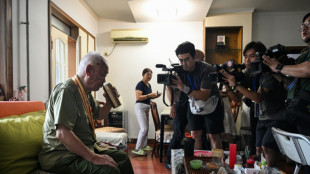
-
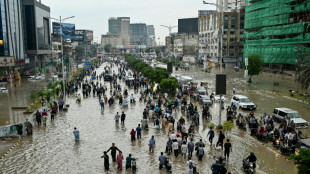 Pakistan's monsoon misery: nature's fury, man's mistake
Pakistan's monsoon misery: nature's fury, man's mistake
-
SpaceX answers critics with successful Starship test flight
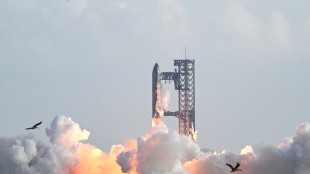
-
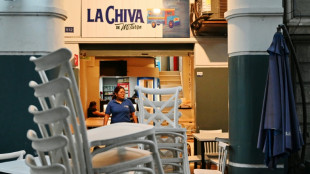 Nightlife falls silent as Ecuador's narco gangs take charge
Nightlife falls silent as Ecuador's narco gangs take charge
-
Unnamed skeletons? US museum at center of ethical debate
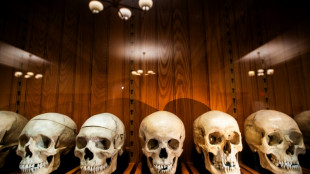
-
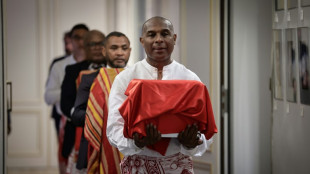 France returns skull of beheaded king to Madagascar
France returns skull of beheaded king to Madagascar
-
SpaceX's Starship megarocket launches on latest test flight
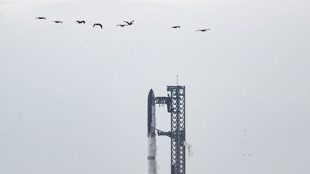
-
 Formerra Appointed Distributor for Italy's Epaflex TPU Lines in the UK & Ireland
Formerra Appointed Distributor for Italy's Epaflex TPU Lines in the UK & Ireland
-
US restaurant chain Cracker Barrel cracks, revives old logo

-
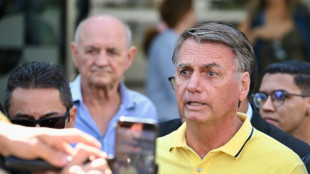 Brazil's Bolsonaro placed under 24-hour watch ahead of coup trial verdict
Brazil's Bolsonaro placed under 24-hour watch ahead of coup trial verdict
-
Taylor-Travis love story: 5 things to know
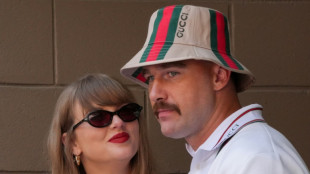
-
 Sports world congratulates Swift and Kelce on engagement
Sports world congratulates Swift and Kelce on engagement
-
Wolves inflict more woe on West Ham, Leeds crash out League Cup


Scientists scour 'Mexico's Galapagos' for quake, volcano clues
Could a volcanic eruption off Mexico's coast unleash a tsunami like the one that devastated Tonga? What really causes tectonic plates to shift and trigger earthquakes? Scientists visited a remote archipelago in search of answers.
Located in the Pacific Ocean several hundred kilometers from the Mexican coast, the Revillagigedo Islands are known as "Mexico's Galapagos" due to their isolation and biodiversity.
One of the archipelago's volcanos, Barcena, last erupted spectacularly in 1953, and another Evermann, in 1993. Both remain active today.
Located on a mid-ocean ridge, the four islands, which were added to the UNESCO World Heritage list in 2016, are uninhabited apart from navy personnel, and access is tightly restricted.
Getting there takes about 24 hours or more by boat and few civilians visit apart from scuba drivers lured by giant manta rays, humpback whales, dolphins and sharks.
Last month, an international team of 10 scientists carried out a week-long mission whose aims included trying to determine if -- or more likely when -- there will be another volcanic eruption.
"What we're trying to find is how explosive these volcanos can be and how dangerous," said the group's leader, Douwe van Hinsbergen, a professor at Utrecht University in the Netherlands.
- Challenging convention -
The worry is that something similar to the cataclysmic eruption of the Hunga Tonga–Hunga Ha'apai volcano in January could send a tsunami hurtling towards Mexico's Pacific Coast.
"Whenever there are active island volcanos, there are always possibilities of generating tsunamis," said Pablo Davila Harris, a geologist at Mexico's Institute for Scientific and Technological Research of San Luis Potosi.
"What we volcanologists are looking for is when the next eruption is going to happen," using modeling based on previous volcanic activity, he added.
The team also hopes that its analysis of minerals brought up by past eruptions will help to understand the motion of tectonic plates, which cause earthquakes and volcanic activity.
"Plates move over mantle. Is the mantle pushing the plates? Is the mantle doing nothing?" van Hinsbergen said.
According to conventional theory, convection -- the mantle's motion caused by the transfer of heat from the Earth's core to the outer layer -- causes tectonic plates to move and grind against each other.
Van Hinsbergen's hypothesis is that the mantle is in fact "a big lake of rock that is essentially not convecting," which he said would require a complete rethink.
"If that is true, then everything that we see, at least on timescales of tens of millions of years and shorter, is driven by gravity pulling plates down. And that would make the whole system a lot simpler," he said.
The mission received funding from a Dutch program for -- in van Hinsbergen's words -- "ideas that are almost certainly wrong but if they're not they will have big implications."
The samples collected have been taken to Europe for analysis and the results are expected to be known later this year.
O.Bulka--BTB
